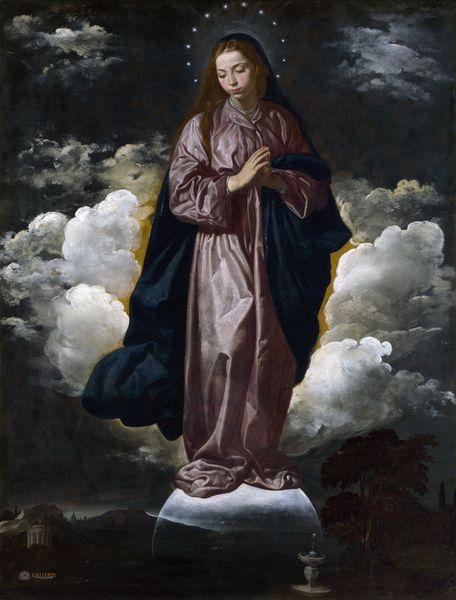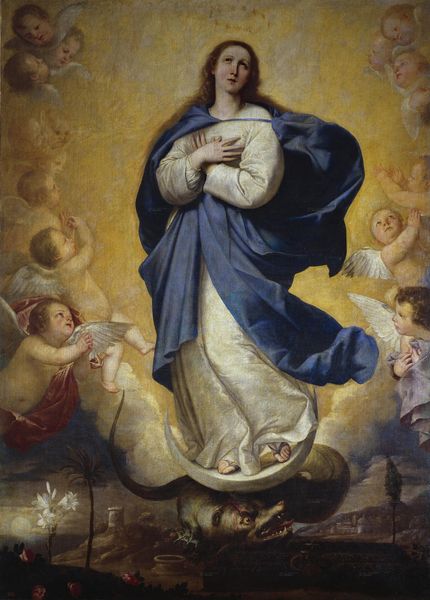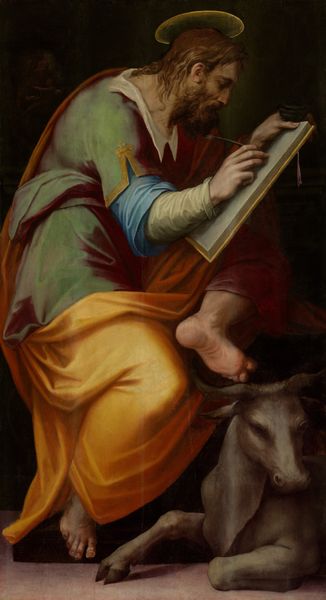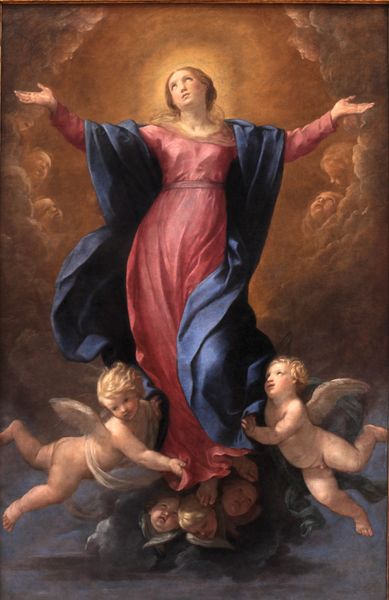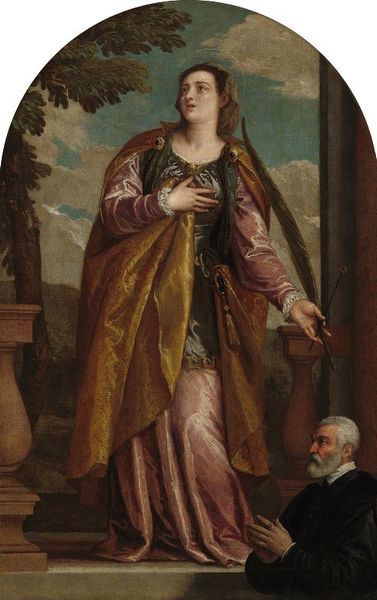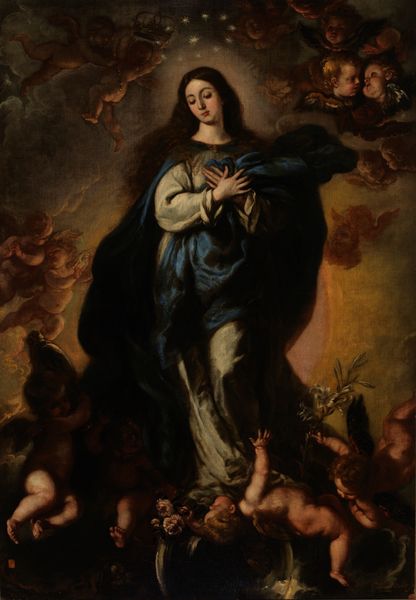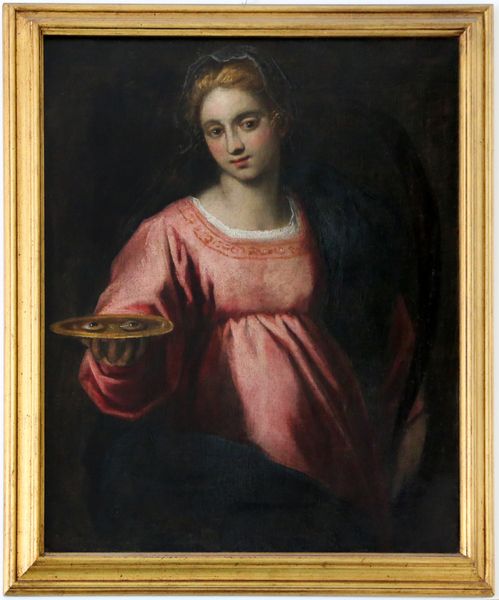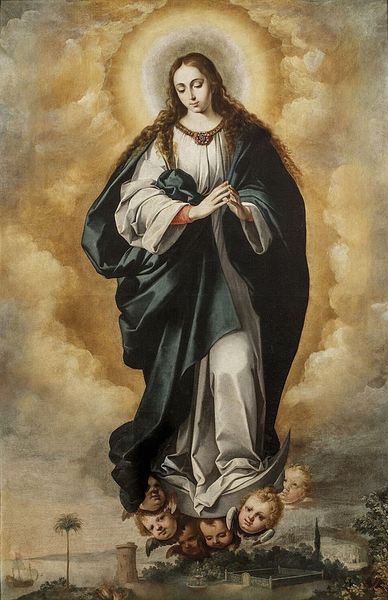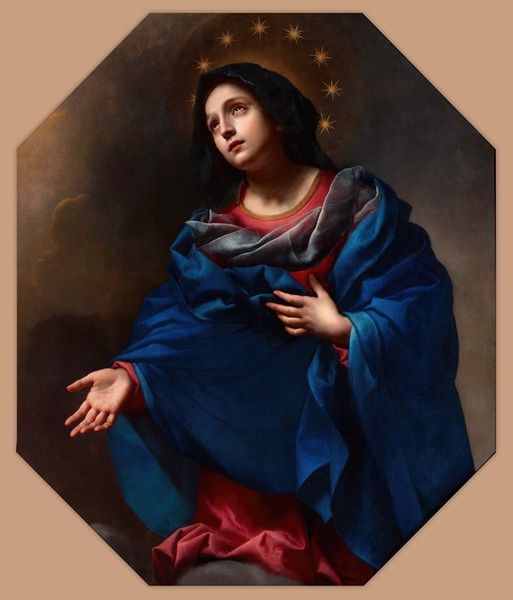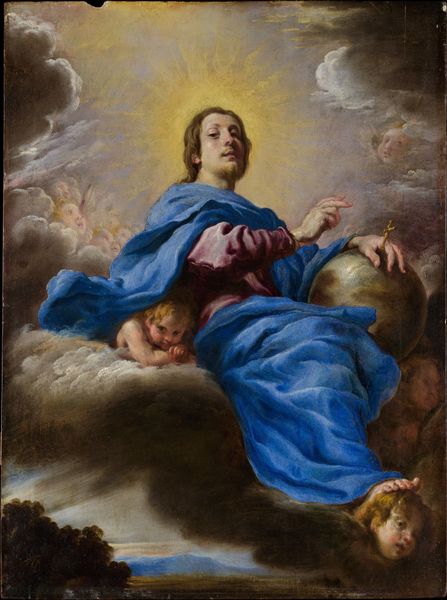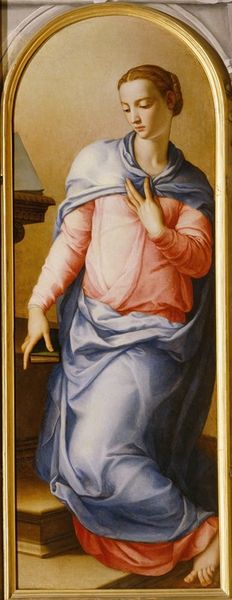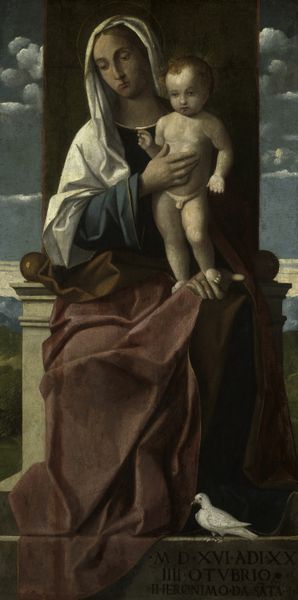
painting, oil-paint
#
portrait
#
baroque
#
painting
#
oil-paint
#
figuration
#
oil painting
#
christianity
#
history-painting
#
realism
Dimensions: 186 x 104 cm
Copyright: Public domain
Curator: Here we have Bartolomé Esteban Murillo's "Saint Catherine of Alexandria," completed in 1655, an oil painting currently residing at the Museo de Arte de Sao Paulo. Editor: Immediately, I'm struck by the dynamic asymmetry and that striking diagonal line formed by the sword and her gaze heavenward. There's a real sense of upward movement, visually. Curator: Indeed. Murillo uses a rich colour palette, carefully structuring the composition with a balanced distribution of light and shadow to direct the viewer’s eye. Note the interplay between the soft drapery and the hard edge of the sword, this juxtaposition gives textural contrast. Editor: And it underscores the duality inherent in Saint Catherine's narrative. The sword, of course, a symbol of her martyrdom, contrasts with the angelic presence crowning her with a garland, signaling victory and sainthood. The broken wheel is very direct, an unmistakable attribute. It represents the instrument of her attempted execution, miraculously shattered. Curator: The column at the painting's edge introduces classical architecture into this Baroque exploration of form. The precise use of contrapposto subtly shifts her weight which infuses a dynamism, drawing one's eye towards her face, acting as the primary focal point. The rendering shows mastery of light and shade and provides spatial dimension and visual complexity. Editor: The luminosity in her upward gaze suggests divine inspiration, almost visionary fervor. It speaks to her intellectual prowess and unwavering faith. But it’s not just about her unwavering convictions. Her image evolved. Initially represented holding the wheel or bound to it, the sword appeared as an attribute with the increased devotion to her as a patron of the military, an aspect of Catherine that highlights her empowerment. Curator: One cannot deny the surface detail. Murillo, with his impasto style of layering paints, guides the viewer through the planes and three-dimensional form and brings a heightened intensity. Editor: Ultimately, beyond the formal elements and skillful technique, Murillo presents Saint Catherine not just as a historical figure, but as an enduring symbol of faith, knowledge, and resistance, conveyed through the visual language of the Baroque. Curator: Indeed, this composition of dynamic form and considered symbolism makes a powerfully evocative statement, a painting that bears revisiting. Editor: Yes, a canvas rich with both aesthetic grace and layered symbolism, compelling on multiple levels.
Comments
No comments
Be the first to comment and join the conversation on the ultimate creative platform.

